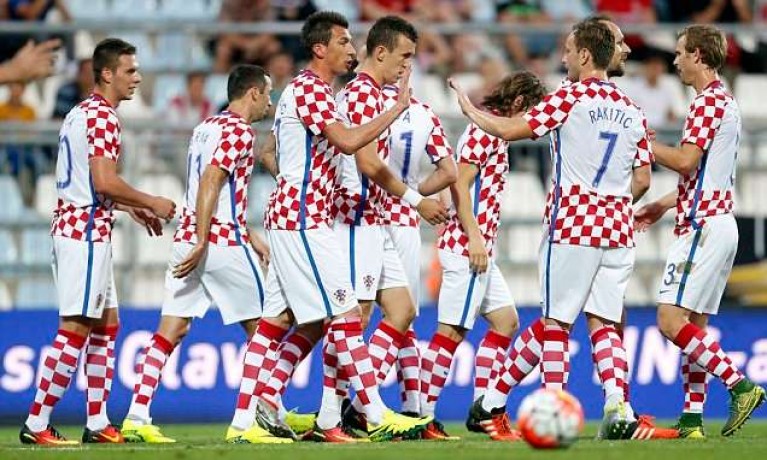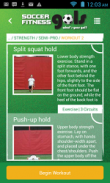On Sunday, July 15th, in front of a packed crowd at Moscow’s Luzhinski Stadium, the French National Soccer Team won their second FIFW World Cup, beating Croatia – who were making their first-ever appearance at an international final of any kind – by a final score of 4-2.
It was an entertaining match which included great goals, not-so-great goals, and even some controversial goals, but in the end the Croatians came up short against a talented French side.
Neither the French nor the Croatians had an easy path to the World Cup Final, especially in the knock-out rounds.
France likely had the more challenging opposition, having to go through Argentina, Uruguay, and Belgium, while Croatia certainly had the higher physical load, having been pushed through 120 minutes of extra time and a penalty shootout against all three of their opponents, Denmark, Russia and England.
The Croatians also got one less day of recovery prior to the Final, having played their Semi-Final on Wednesday July 11th (giving them only 3 days of rest) as opposed to the French who played on Tuesday July 10th (giving them 4 days).
All-in-all, Croatia played 90 extra minutes of soccer – the equivalent of a full match – and had 24 hours’ less recovery than France, ahead of their showdown on Sunday afternoon.
When taking these factors into account, one could be forgiven for predicting a French win on Sunday, and – after the fact – for attributing the French win to the Croatians being “too tired.”
But was Croatia really “too tired” in the World Cup Final? Was fatigue, or lack of fitness, really the reason they lost the match?
I decided to take a closer look at the numbers from Croatia’s performance in the Final, as well as in their three knockout round matches, in the hopes of providing some insight into what role – if any – physical fitness and fatigue played in the outcome of the matches and the overall performance of the Croatian team.
Below are the three ways that fitness helped the Croatian team at the 2018 FIFA World Cup, and the lessons that can be learned from their memorable and historic performance.
- Croatia covered the same distance as France in the World Cup Final.
Recent research by Bradley et al. (2013) has indicated that teams at a lower competitive level tend to run more than teams at a higher competitive level, and that teams matched for competitive level tended to cover the same amount of distance as their opponents.
Other research by Verheijen (2012) demonstrated that teams who compete in international tournaments and play in a match in which they have had only three days of rest from their previous match, versus an opponent who has had four days of rest, have between a 25-44% less likely chance of winning the match.
In the 2018 World Cup Final, however, Croatia covered 99 kilometres, almost the exact same distance as France, who covered 100 kilometres.
Thus, Croatia, despite having played 90 more minutes than France over the course of the knockout round, and despite having one less day of recovery, was as competitive as the French and was able to “keep up” with them physically throughout the match, which serves as an indication that they did not lose the match due to fatigue.
- Croatia matched or out-performed France in most other statistical categories in the Final.
Liu et al (2017) determined that among the soccer performance variables with the highest predictive value in matches were total shots taken, shots on target, and – to a lesser extent – percentage of ball possession.
Once again, Croatia was equal to – and, in some cases – better than – France in these statistical categories. They had 15 total shot attempts (versus 8 for France), 3 shots on target (versus 6 for France), and 4 shots blocked (versus 1 for France), and also had 61% ball possession (as compared to 39% for France).
The Croatians also had more corner kicks (6 versus 2) and greater passing accuracy (83% versus 75%) than the French in the match.
Thus, despite their obstacles in terms of total minutes played and total recovery time prior to the Final, Croatia were not only able to “keep up” physically with France, they were able to perform slightly better technically in the match as well.
- Croatia performed just as well physically and technically in their other 3 knockout round matches as they did in the Final.
In their matches versus Denmark, Russia, and England, Croatia also covered approximately the same distance (132Km vs. 135Km versus Denmark, 139Km vs. 148Km versus Russia, and 148Km vs. 143Km versus England, respectively) as their opponents.
The Croatians also bettered their opponents in the other technical categories. They had more total shots in all 3 matches (22 vs. 15 versus Denmark, 17 vs. 13 versus Russia, and 22 vs. 11 versus England, respectively), more shots on target in 2 of their 3 matches (7 vs. 3 versus Denmark, and 7 vs. 1 versus England, respectively) and more ball possession in all 3 matches (54% vs. 46% versus Denmark, 62% vs. 38% versus Russia, and 54% vs. 46% versus England, respectively).
Croatia secured more corner kicks in 2 of the 3 matches (5 vs. 4 versus Denmark, and 8 vs. 4 versus England, respectively) and also had better or equal passing accuracy in all 3 matches (81% vs. 79% versus Denmark, 82% vs. 69% versus Russia, and equal at 79% versus England, respectively) against all 3 of their opponents.
Fatigue – although it certainly may have been present in the Croatian team, did not seem to negatively affect their overall performance in the World Cup.
Not in the knockout rounds, and not in the Final itself.
Taken together, these statistics demonstrate that Croatia must have been one of the fittest teams in the World Cup, a clear testament to their training and recovery strategies in preparation for and during the tournament, especially during the knockout rounds.
Lessons to be learned from the Croatian team.
Why, then, did Croatia lose the Final?
Simply put, Croatia lost the World Cup Final because they made defensive mistakes in the second half, which France capitalised on to score their third and fourth goals, effectively sealing the outcome of the match.
Notwithstanding the controversial calls which led to the awarding of a free kick (and subsequent own goal by Mario Mandzukic, which opened the scoring for France) and penalty shot (resulting from a handball in the box by Ivan Perisic, which required an intervention from the Video Assistant Referee) converted by Antoine Griezmann to make it 2-1 just prior to the end of the first half, the Croatian team was undone not by fatigue or a lack of physical fitness, but by temporary lapses in concentration in the second half.
First, in the 59th minute, they allowed Paul Pogba to pounce on his own rebound after a blocked volley, which made the score 3-1, and then, just 7 minutes later, they failed to put sufficient pressure on Kylian Mbappe, who fired a shot past Daniejel Subasic in the near post of the Croatian goal to make it 4-1.
Perhaps not surprisingly, Croatia got right back into their rhythm following the two French second half goals by maintaining possession, pushing players forward, attacking in numbers and creating scoring opportunities. They even got a goal back through Mandzukic in the 69th minute, making for a very competitive final 20 minutes of play.
Coaches and fitness coaches can learn a lot from the performance of the Croatian team at this year’s World Cup.
The first lesson is that, if you train smart and prepare well, you can withstand and overcome the cumulative effects of fatigue in international tournaments and still come away with positive results.
A second – and perhaps more important – lesson is that if you are able to manage and control the pace and rhythm of a match, you can make up for any extra fatigue your team may be experiencing, without negatively affecting results.
A third and final lesson is that, no matter how well you prepare physically for a match, and no matter how well you may perform throughout the course of a match technically and tactically, you can still lose if you suffer a lapse in your concentration, especially at the highest and most competitive international levels.
While the Croatians had to settle for second place this time, they have clearly shown that they have both the physical and technical/tactical tools to compete and win at the highest international level. Can they build on the momentum from this year and win an international tournament in the future? Only time will tell, but I can’t wait to find out!
I’d love to hear your thoughts about this topic. Drop me a line here to get the conversation started.
References
Bradley, P.S., Carling, C., Gomez Diaz, A., Hood, P., Barnes, C., Ade, J., Boddy, M., Krustrup, P., Mohr, M. (2013). Match performance and physical capacity of players in the top three competitive standards of English professional soccer. Human Movement Science, 2013; 32 (4): 808.
Liu, H., Hopkins, W.G., Gomez, M.A. (2016). Modelling relationships between match events and match outcome in elite football. European Journal of Sports Sciences, 16(5):516-25.
Verheijen, R. (2012). Study on recovery days. World Football Academy, Amsterdam, The Netherlands.




